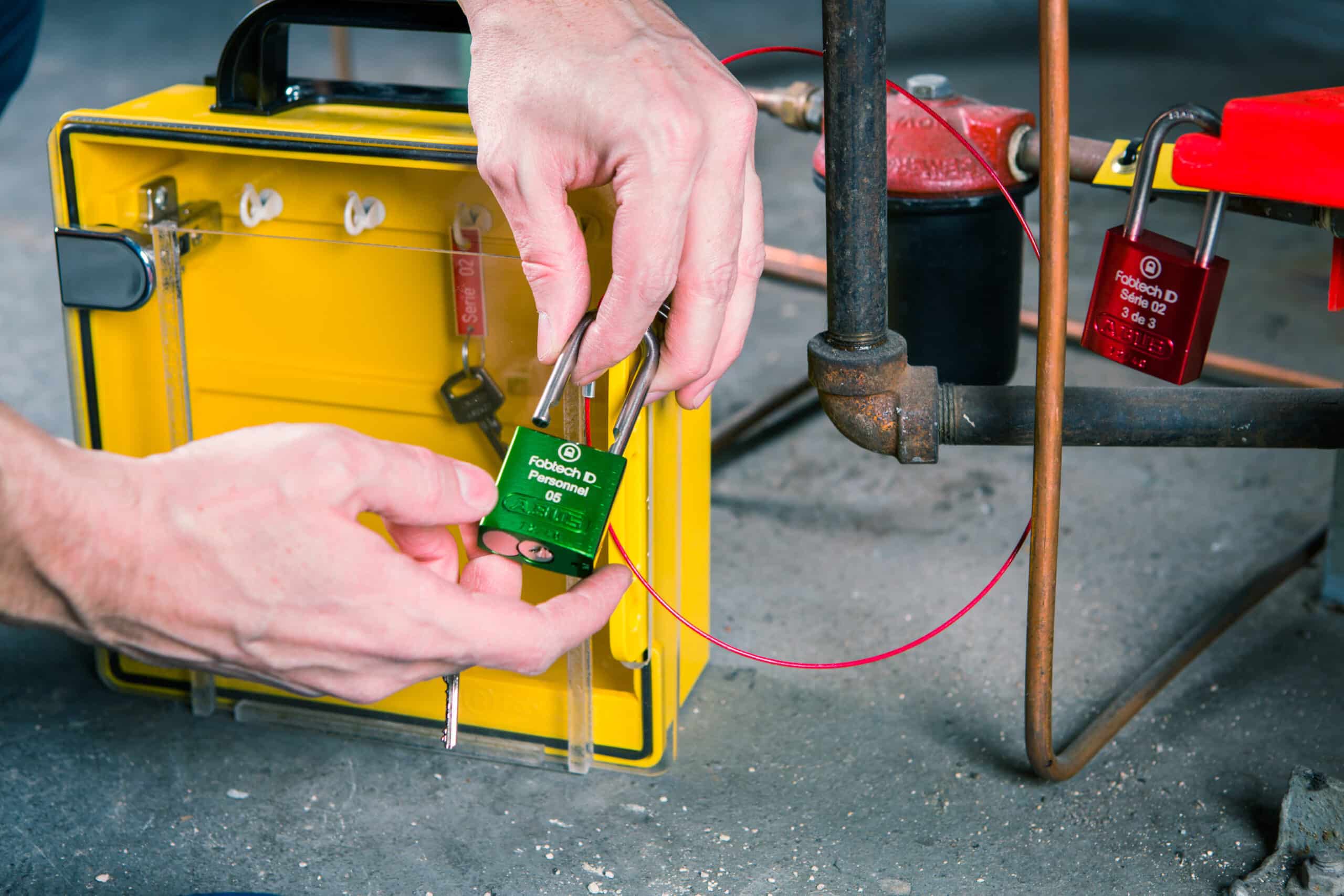LOTO | Different Types of Locks for Different Purposes


Lockout Tagout Management | A Key Element for Health & Safety
15 January 2018
As elaborated in the book “Manage Health & Security; Get the Best…Prevent the Worst” by Marc-Andre Ferron, the basis for proper Health & Safety solutions, Lockout Tagout management is to identify the risks within your company and ensure you comply with all the applicable rules and regulations. LOTO, beyond being a requirement in several EHS standards worldwide, is a key element to both the health and safety of workers, and operational efficiency. The underlying reason that LOTO is often identified as the first control method to be instated during the risk identification period is simple. It can be illustrated by the hierarchy of preventive measures:
As stated above, eliminating the hazard is the most efficient way to control risk. LOTO, when properly implemented and managed, is the simplest and most efficient way to control the energies associated with the hazard. The major normative principles are all based on the Plan-Do-Check-Act formula and a project to implement a LOTO management system is no exception. When properly managed, it guarantees the physical integrity of workers and significantly reduces the time required to control hazardous energies. For many companies, LOTO management is limited to procuring accessories (locks, boxes, mechanisms, etc.) and/or having a set of well-documented procedures, easily accessible by the workers and with its content up-to-date. These aspects, although very important, are in fact, only a few facets of an overall LOTO management. Let us look at all the necessary elements to make a LOTO implementation successful.
The first step in the integration of a Lockout Tagout Management system is to establish clear rules and guidelines. It would be impossible to play Monopoly without establishing the “house rules,” so why should it be any different regarding a worker’s safety? From the roles and responsibilities of each stakeholder to the colors of padlocks to be used, the program is used to regulate the LOTO practices within the company. This program, far from being a shelved document after being drafted, must stay alive and be periodically revised to reflect your business’s goals and best practices.
In order to simplify the application of procedures in the field by employees, it is recommended to tag each of the items listed on a LOTO procedure with a standardized and unique number. The tags used should be durable and easy to spot in the working environment. This action enables the employees to ensure the correlation between the steps mentioned in the procedure and the device to be operated in the field. It also allows them to significantly reduce the time it takes to perform their lockouts.
The next step is usually the development of LOTO procedures. Either developed by areas, by equipment or by systems, the procedures must detail the steps required to control the hazardous energies to which the worker may be exposed while performing a job. When developing LOTO procedures, it is important to take into account both internal and external elements in the work area. All LOTO procedures should normally be verified by a competent person and the final document should be approved by a company representative (supervisor, manager, etc.) before being used in the field. The information contained in each of the procedures must also be reviewed periodically.
As the saying goes, “We cannot control what we do not measure.” It would be, therefore, impossible to say that we are in full control of the LOTO if we do not take the time to periodically observe how it is doing out on the plant floor. Several types of observations can be performed to evaluate compliance with the established LOTO program:
The data compiled from these observations allows management to provide appropriate feedback to the workers and make the necessary adjustments if deviations are noted.
Many companies feel the need to “be good” at performing LOTO before starting to observe it. While it caters to our ego to see some positive numbers on those first observation reports, the complete opposite should be done. By starting the observation process at the system go live, it is possible to identify and address the deviations before they become bad habits, ultimately making the time required to become good shorter.
The usage statistics of procedures and other documents related to LOTO can also provide crucial information about the global health of the system you implemented. Once analyzed, the data can provide a predictive model that will lead to a global optimization of the system and its sustainability.
If the selection of preventive measures for a task is limited to Lockout Tagout Management, there might be cases where performing a LOTO may prevent the execution of the task in question. Let us think, for example, of all the tasks that are considered an integral part of the operational process like the troubleshooting or commissioning of an equipment. These tasks, which are usually performed by qualified and competent staff, sometimes put the workers in the presence of an uncontrolled, hazardous energy. This type of work should be thoroughly analyzed to identify the risks to which the worker is exposed and the results of the analysis should be communicated to the affected employees. Corrective measures may range from the simple use of personal protective equipment (PPE) to the development of special tools or guarding that must be implemented to ensure the physical integrity of the worker.
Where the risks associated with a task cannot be controlled by applying a LOTO procedure, it is necessary to inform employees of the control measures implemented for their safety and physical integrity. The safe work procedures or standard operating procedures will enable the worker to know all the risks that are present during the execution of the task and provide him with a list of all the steps he needs to perform to reduce said risks to an acceptable level.
There are several elements to be implemented for an overall LOTO management within a company. This non-exhaustive list of elements to be implemented demonstrates that the LOTO, although generally considered a simple aspect of EHS, is a multifaceted process. The integration of all these elements should help your business meet the standards and regulations, and should provide your company’s EHS culture the flexibility to establish a safe working environment while still keeping operational optimization a priority.
For over 35 years, CONFORMiT’s Lockout Tagout system has been optimizing production, minimizing worker risks, and maximizing profits for high-risk industries across North America. Our zero-training-required, AI-powered enterprise solution frees employees from clumsy, chaotic processes. Unlocking safety excellence has never been so simple.
CONFORMiT enables its clients and their communities to provide a healthy and safe workplace while improving their productivity and profitability to build a more sustainable future.